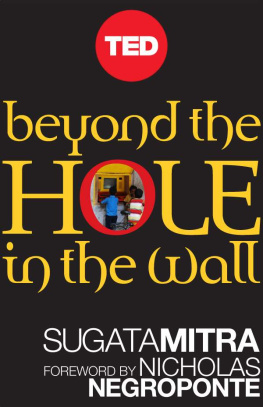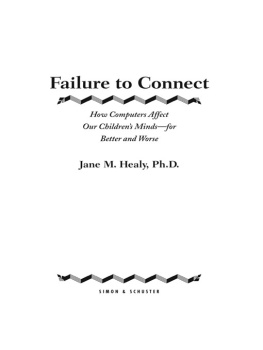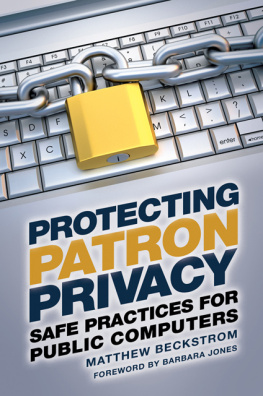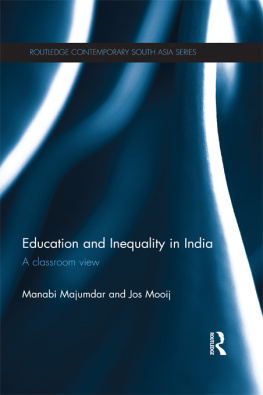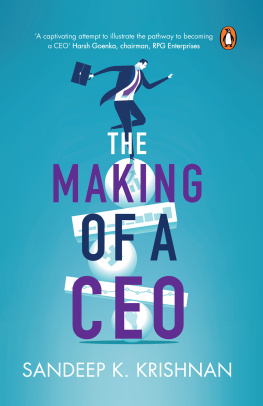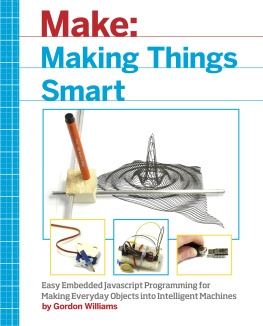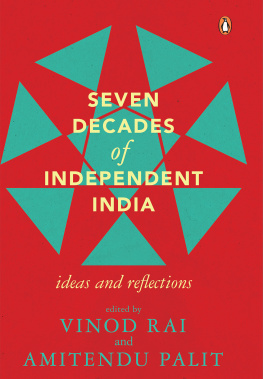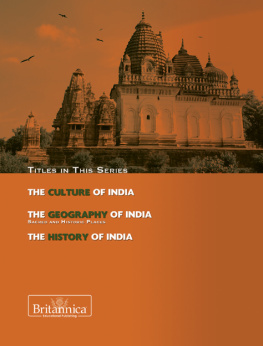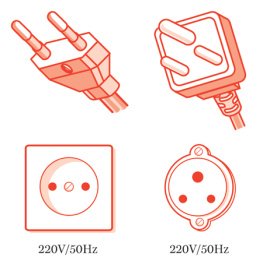This book is for Shantibrata Biswas, who made children laugh.
Foreword
Learning without school
By Nicholas Negroponte
Learning and teaching are not symmetrical. They are not the flip sides of the same coin, in spite of the fact that almost all papers and conversations on education assume they are.
The working assumption is this: Solve teaching and you will get learning. Even if true in part, it addresses only some kinds of learning and never really attempts to understand the learning of learning itself. And, of course, it does not apply to the 70 million children worldwide who do not even go to first grade.
I am constantly astonished and disappointed at the assumptions people make about education: how to achieve it, how to measure it, how to accelerate it where it exists and how to create it where it does not. The default model that most people use is called school, and that includes yet further assumptions. The most universal and blatantly false of them is that age segregation is a good idea. The idea that all 7-year-olds should study together, and then the next year do the same with 8-year-olds, is just a bad idea. It was designed only for the convenience of the institution. It is like public toilet stalls not going from floor to ceiling, for the convenience of the janitors.
Enter Sugata Mitra. He offers a very different view of learning, one which involves the collective learning of mixed ages, achieved without a teacher. He has shown that a critical mass of illiterate 10- to 12-year-olds can conduct exercises of a level of difficulty that would otherwise require an eighth- to 10th-grade education. He lets these children teach each other, self-organize and explore in a manner more akin to the organization of a sports team than of a classroom.
There is a great deal to learn from Sugatas 12 years of experience with the Hole in the Wall project. To me, the most notable idea is that children are far better at organizing themselves than we assume. Much of the world is discoverable, which is how we all learned from the time we were born until around age 5, when our more formal education began. We interacted with our environments to acquire language and common sense. We acquired so much knowledge during those years that we learned many things about manipulating the world and even some about manipulating our parents. Suddenly, at age 5, our learning was assumed to be different and was delivered to us, almost solely through being told by people and soon after by books.
Sugatas point is that a great deal of what we call education is now discoverable. If children can learn to read on their own (the topic of his next book), they can learn almost everything else on their own, too. Keep in mind, he does not mean one child by himself or herself; he means by a collective process. That can include adults, certainly, but in many places on this earth there are no adults with sufficient literacy to help.
Ask yourself what education means. We measure children on what they know. By and large, they have to memorize useless content to meet that test. Because measuring the results of rote learning is easy, rote prevails; and in developing nations, rote learning is worse than in the United States (believe it or not) and yet worse than in some nations we admire in Asia. What kids know is just not important in comparison with whether they can think.
Learning math and spelling is far less important than learning the act of learning. That is what Sugatas children are doing, and that is what this book is about.
Massachusetts Institute of Technology
Cambridge, Massachusetts, USA
Introduction
When wandering down the street, its hard to tell, at a glance, whether a person is speaking on a cellphone through a hands-free headset tucked discreetly into her ear or simply talking to herself.
At the supermarket, you cant tell if the cashier knows arithmetic or not. Your groceries are scanned electronically and the prices tallied automatically. Yet the cashier probably still performs his work capably. Arithmetic is an outdated life skill, like swordplay or horse riding. Four hundred years ago, those were vital life skills; today they are relics of a bygone world and primarily enjoyed as sports.
Although right now you can tell when a person is online because the smartphones, computers, and other devices that connect us to the Internet are big enough to be seen, this too will soon change as the electronic tools that immerse us in the online world become smaller and more seamlessly integrated into our products and our lives.
In the same way that its getting harder to tell whether a person is talking on a cellphone, capable of doing basic arithmetic, or surfing the Internet, we are entering a world in which it will be difficult, maybe impossible, to determine whether a person is educated or not. Will this matter? Is formal education, as we know it, an outdated idea? That last question is the central focus of this book.
This is a story about how different our not-too-distant future may be. Suspend your disbelief, at least momentarily, and join me on this journey into the next half century. Remember, 50 years ago there were no computers, no cellphones, no Internet, no Google, no Facebook and no Prozac. And we have every reason to expect that 50 years from now there will have been equally momentous and transformative changes from the way we live today.
A generation of children who are 16 years old or younger have never known a world without many of the connecting technologies that we have come to take for granted and rely on heavily. How do these devices affect, and even improve, how we absorb information?
This book is about children and learning in a highly connected world. It was launched through a series of experiments known collectively as the Hole in the Wall project. The experiments spanned more than a decade and were spread across five continents, and they revealed a great deal about how learning happens and how consciousness develops.
I finished this book on a rainy August 15th, Indias Independence Day. But there is another independence day I would like to talk about here: It is the day we achieve independence from an education system that is more than 2,500 years old. Its time to begin that journey.
Sugata Mitra
Cambridge, Massachusetts
2062: Childs play
Rita woke up with a start. The volume was too high on the Bluetooth Stereo Implants (BSIs) in her ears. The implants were new, a gift from her parents for her ninth birthday, which was just a week ago. Her bio-mom had been worried the BSIs might damage Ritas hearing if they were set wrong, but her fathers partner Joan was a doctor, and Joan convinced Ritas bio-mom that BSIs were safe for children. They dont have anything to do with the eardrums, Joan explained. BSIs connect directly to the cochlear nerves.
It took just 15 minutes to get the implants fixed, and it didnt hurt. Really. Rita was in love with her BSIs. Every sound was clearer, even the slightest whisper. Best of all, she liked how her BSIs could read stories to her from the Internet so softly that no one could tell she was listening.
On the third day after the implants were inserted, Rita learned to do Hi-Google searches, which were sophisticated ways of doing very deep research online. Now she could answer almost any question at all. In their groups in school, Maam had asked them to learn about electricity. One group announced an early finding: An electric current was a flow of electrons. Whats an electron? asked Maam. The children worked together for a while in a Self-Organized Learning Environment (SOLE) to find out. My goodness, I didnt know that at all! Maam exclaimed when the children reported their findings. The group laughed.

